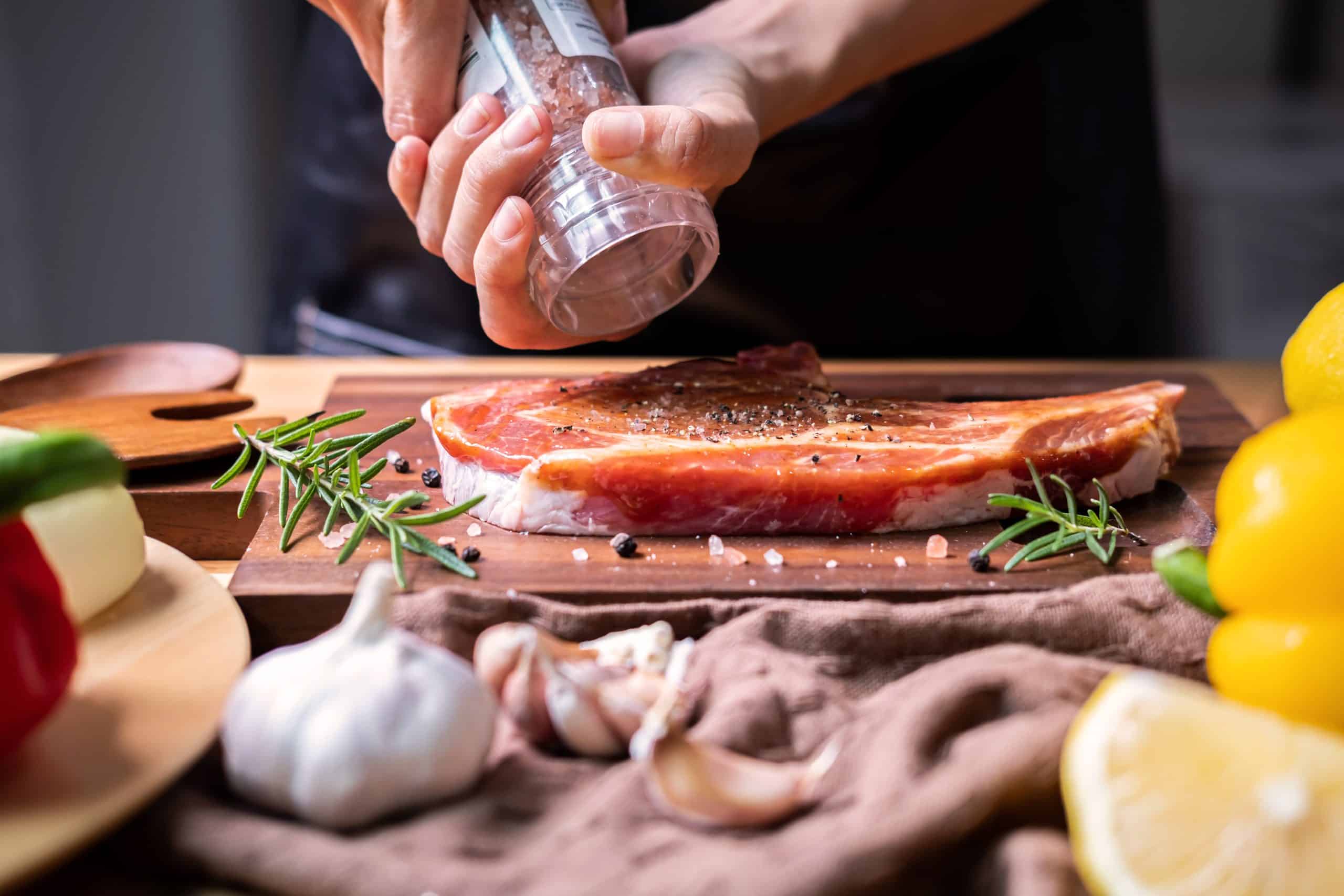The ultimate guide to barbecue ribs and pulled pork

Are you ready to elevate your next summer barbecue? Then let’s dive into the tantalizing world of ribs and pulled pork, two star attractions of any self-reserving barbecue. This guide is intended to equip you with the essential knowledge needed to cook these delicious meats to perfection. We’ll delve into the types of meat suitable for grilling, the time it takes to cook them, the right temperature, as well as the perfect accompanying sauce. So, tie on your apron and grab your grill tongs – it’s time to learn the art of barbecuing ribs and pulled pork!
Choosing the Right Meat: Pork or Baby Back Ribs?
Before you can even think about firing up the grill, you need to decide on the right meat. When it comes to ribs, you have two main choices: spareribs and baby back ribs. Spareribs come from the belly side of the pig’s rib cage, offering more bone than meat but packed with flavor. On the other hand, baby back ribs come from the upper part of the rib cage and are meatier and leaner.
Lire également : The joy of baking with yeast: bread, rolls, and more
For pulled pork, the best cut of meat is the pork shoulder, often referred to as Boston Butt. This cut is marbled with fat, which melts as the meat slow-cooks, leaving it tender and juicy.
The Art of Preparation: Rubs and Marinades
A good barbecue starts with a good marinade or rub. A rub, a mixture of spices and seasonings, is massaged into the meat, generally a few hours before cooking, to infuse it with flavor. A marinade, on the other hand, is a liquid in which the meat is soaked, usually overnight, to tenderize it and enhance its taste.
Cela peut vous intéresser : Mastering the art of japanese tempura
For ribs, a rub of brown sugar, paprika, black pepper, and a smattering of other spices often does the trick. However, enthusiasts might want to experiment with different flavors like adding cumin or chili powder.
The ideal rub for pulled pork should contain a balance of sweet, spicy, and smoky flavors. Common ingredients include brown sugar, cayenne pepper, smoked paprika, and garlic powder.
Cooking Time and Temperature: The Low and Slow Approach
One of the keys to achieving mouthwatering, fall-off-the-bone ribs and tender pulled pork is cooking them low and slow. This method allows the collagen in the meat to break down over time, resulting in tender and juicy meat.
Ribs typically take between 4 to 5 hours to cook at a temperature of 225°F (107°C). Conversely, pulled pork requires a longer cooking time due to its size and density. Expect to cook the pork shoulder for about 1.5 hours per pound at the same temperature.
Smoking: Adding a Touch of Flavor
Smoking is another essential aspect of barbecuing ribs and pulled pork. It doesn’t just cook your meat; it imparts a distinctive smoky flavor that’s hard to replicate with other cooking methods. Depending on the type of wood chips you use—like hickory, apple, or cherry—you can subtly alter the flavor profile of your meat.
The Sauce: The Icing on the Meat
No BBQ is complete without a killer sauce. For ribs, a sweet and smoky sauce typically pairs well, while a tangy, vinegar-based sauce usually complements pulled pork. Remember, the sauce should enhance, not overpower the taste of your meat. Apply your sauce during the last 30 minutes of cooking to prevent it from burning.
Serving Your Ribs and Pulled Pork: The Final Touches
Now that you’ve mastered the art of cooking ribs and pulled pork, it’s time to make the presentation just as impressive as the taste. Ribs are best served right off the grill with a side of extra BBQ sauce.
Pulled pork, as the name suggests, should be ‘pulled’ apart into shreds once it’s cooked. It’s typically served on a bun with a spoonful of coleslaw for a contrast of textures.
In conclusion, mastering the art of barbecuing ribs and pulled pork is not for the faint of heart. It requires patience, the right ingredients, and the willingness to get your hands a little messy. But once you’ve tasted your homemade, slow-cooked ribs or pulled pork, you’ll realize that all your time and effort were well worth it.
The Ultimate BBQ Tips: Sous Vide, Internal Temperature and Placing the Ribs
Getting barbecue right requires more than just the fundamental knowledge of selecting the right meat and sauces. It’s about perfecting the art of grilling, understanding the nature of smoking ribs, and being aware of how the internal temperature of your pork butt affects the tender, juicy end result.
One way to ensure perfectly cooked barbecue is by using the sous vide method. This involves sealing your seasoned ribs or pork butt in a plastic bag and submerging it in a water bath at a specific temperature for an extended period. For your baby ribs, a sous vide process at 165°F (74°C) for 12 hours ensures tender and flavorsome results.
When it comes to monitoring the internal temperature of your meat, a reliable meat thermometer is your best friend. For your ribs to fall off the bone, you want an internal temperature of around 190°F to 203°F (88°C to 95°C). For your pulled pork, aim for an internal temperature of 195°F (91°C).
Also, the way you place your ribs on the grill can influence how the smoke and heat interact with the meat, affecting the flavor and tenderness. For the best results, place your ribs bone side down, allowing the meaty side to get more exposure to the smoke and heat.
Crafting the Best Dry Rub and Barbecue Sauce: Kansas City Style
You haven’t truly experienced BBQ ribs until you’ve tasted them Kansas City style. Known for their generous use of dry rubs and thick, sweet and tangy barbecue sauce, Kansas City BBQ is a feast for the senses.
When making Kansas City style dry rub, brown sugar, paprika, salt, black pepper, chili powder, onion powder, and garlic powder are staple ingredients. Massage this rub into your spare ribs or pork butt, ensuring every inch is covered, then let it rest for at least a few hours, or ideally overnight.
Kansas City style barbecue sauce is a delicious concoction of ketchup, molasses, brown sugar, vinegar, and a mixture of spices. The result is a sauce that’s thick, sweet, tangy, and subtly spicy. It complements both barbecue ribs and pulled pork beautifully, adding a layer of luscious flavor that seeps into the meat during cooking.
Conclusion: The Ultimate BBQ Experience
Mastering the art of barbecuing ribs and pulled pork involves careful selection of the right meat cuts, a deep understanding of preparation and cooking techniques, and a flair for crafting flavorful rubs and sauces. Whether you are a fan of baby back ribs or spare ribs, whether you prefer your pulled pork on a bun or by itself, the ultimate satisfaction comes from savoring the fruits of your labor.
By following the tips and techniques detailed in this guide, you will be on your way to achieving barbecue perfection. So, fire up the grill, get your dry rub and barbecue sauce ready, and join the ranks of those who have fallen in love with the tantalizing world of BBQ ribs and pulled pork. And remember, the key to great barbecue is patience, practice, and passion. Happy grilling!
